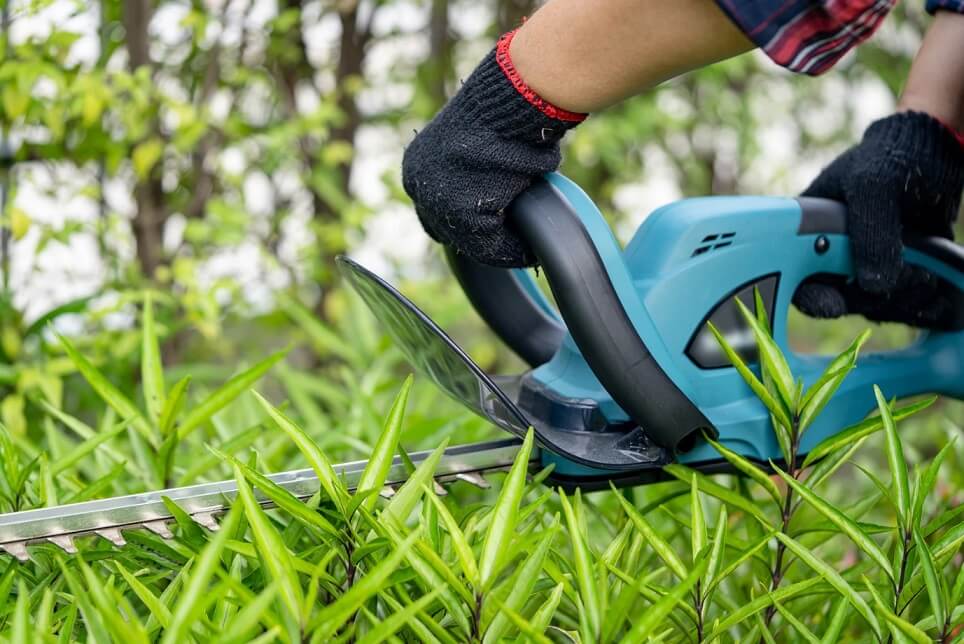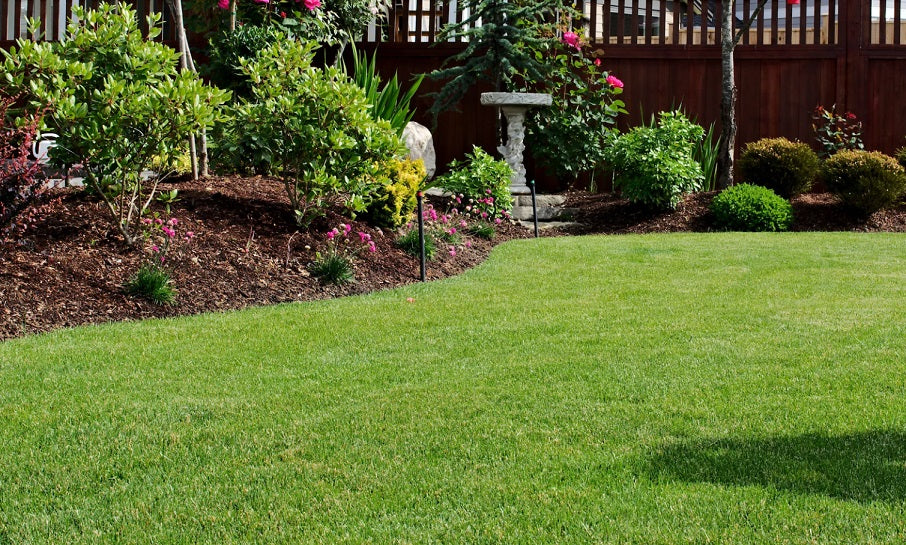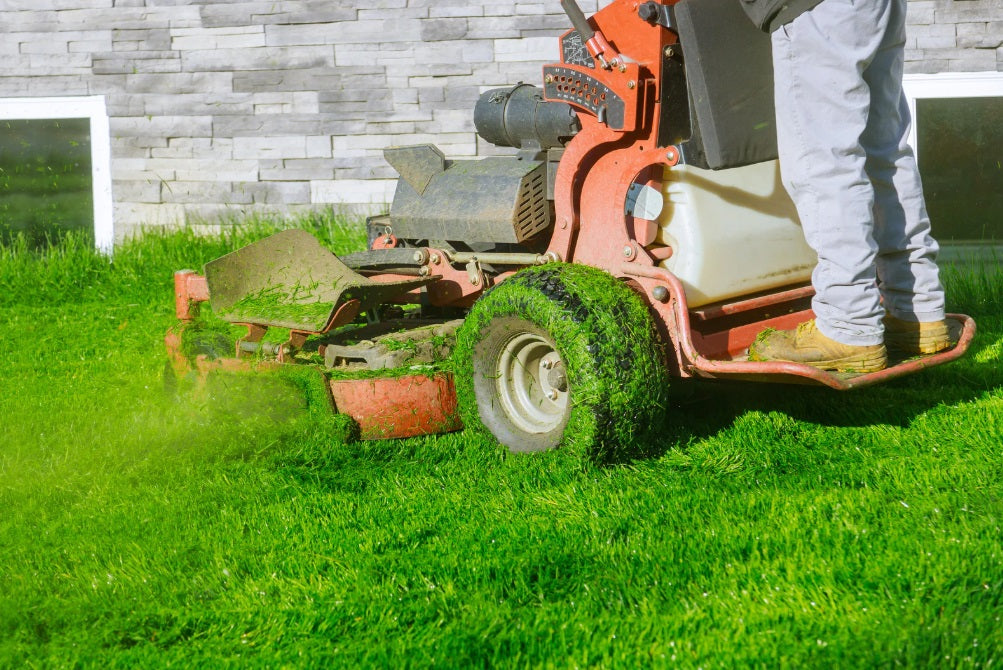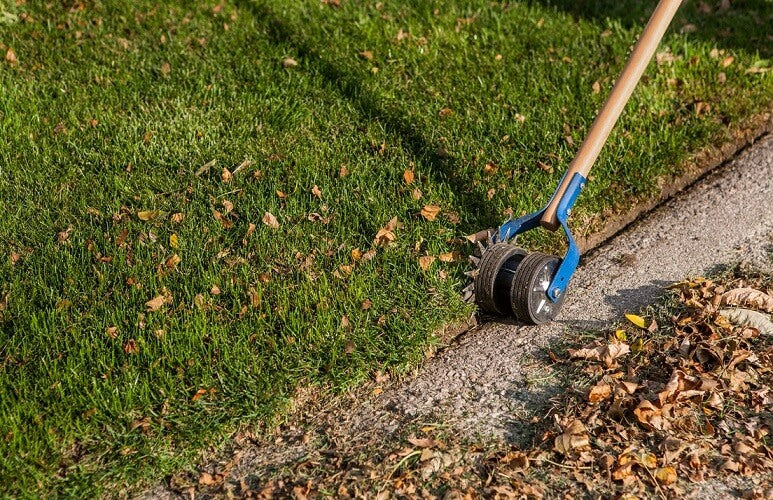Lawn areas with trees, flowers, or walkways are quite common these days. Adding plants or decorations to your outdoor space enhances its overall aesthetics while also serving practical purposes. This kind of practice is what we call lawn edging.
Lawn edging is not a one-day task. However, once it’s done correctly and effectively, your lawn will greatly benefit from it. This lawn edging guide will discuss various types of lawn edging, provide instructions on how to install them, and offer maintenance tips.
The Purposes of Lawn Edging
In case some of you are still undecided about whether to edge your lawn, let’s take some time to clarify the numerous benefits lawn edging will offer.
Lawn edging involves creating clear lines between areas, such as flower beds, walkways, and others. So, most importantly, lawn edging can serve as a physical barrier to prevent grass from invading flower beds or walkways, deter unwanted pests from infesting specific areas, and help reduce soil erosion.
Besides, lawn edging can greatly enhance the overall appearance of your lawn. Edging usually involves adding decorative plants, water features, and other elements, which can make your space more appealing and valuable. Effective edging will help make your lawn neat and organized for relaxation, appreciation, and various activities.
Generally speaking, lawn edging can satisfy both practical and aesthetic purposes. It will save you time and effort on weeding and trimming, making lawn maintenance faster and easier.
Types of Lawn Edging
Before getting to the step-by-step lawn edging guide, it’s recommended that you take some time to decide what kind of edging is suitable for your lawn and what you want to establish. We’ve explored the 10 best lawn edging ideas earlier. Here are some common types of lawn edging you can try at home.
Natural Edging
As its name implies, natural edging utilizes natural items, such as flowers, plants, and trees, to create boundaries and enhance the appearance of your lawn. It’s a cost-effective, eco-friendly edging technique. If your lawn already has flowers and plants, you may dig a trench between that specific area to separate it from the rest of your lawn.
If there are no plants, pick an area, mark the line, and dig the trench. Then use shovels or rakes to remove debris and loosen the soil. Finally, plant flowers, shrubs, or other plants you would like to see in your yard. Last but not least, don’t forget to maintain the trench and trim this natural area periodically. Some plants can grow very fast.
Stone Edging
Another recommended lawn edging idea is stone edging. You may use natural and engineered materials, such as fieldstone, cobblestone, and granite. Stones tend to be weather-resistant and built to withstand the test of time. Also, they are available in a variety of shapes, colors and textures, making stone edging an excellent decorative method to customize your landscape design.
If you use small stones, the entire process can be time-consuming, but you will likely achieve an elaborate and elegant look. Whatever style, rustic or formal, stone edging is a good choice, and it’s not expensive.
Metal Edging
Compared to natural edging, metal edging requires minimal maintenance. Most metals are highly resistant to water, sunlight, and other weather elements, making metal edging a timeless and robust solution.
Steel and aluminum are two metals commonly used in edging to create neat, durable, and defined separations between different areas, as they are lightweight and easily accessible. In some cases, you can bend and shape the metal into various curves and angles to complement your yard. However, metal edging can be more expensive and may require precise installation to avoid sharp edges.
Wooden Edging
Wooden edging, by contrast, is a different style. Generally speaking, common materials include timber, logs, or even reclaimed wood. Given the texture and color of the material, wood edging typically provides a warm and rustic aesthetic that makes your lawn appear more natural and refreshing.
Additionally, wood is quite affordable and can be cut and shaped to create various curves and lines for flexible design options. And it’s pretty durable, particularly woods that have been treated to resist decay and insects. If you use untreated wood, monitor its condition closely. Regular maintenance may be required to prevent rot.
Step-to-Step Lawn Edging Guide
Once you’ve made up your mind on choosing which kind of lawn edging, it’s time to prepare and get started.
1. Mowing Before Edging
It’s recommended to edge after you mow. Short grass will be easier to clean and trim during edging, helping to keep the boundaries crisp and sharp. The whole lawn edging process could be labor-intensive, so you may want to save time and effort on mowing. And what could do that better than a robotic lawn mower? A robotic lawn mower allows you to tap a button via the dedicated app on your phone or set up a schedule to command the robot to autonomously mow the lawn.
If you’re looking for one, consider the Navimow i105 Robotic Lawn Mower. This affordable and reliable mower is equipped with advanced technology and smart sensors that enable it to precisely and automatically map and define the boundary of the mowing area and avoid up to 150 obstacles while mowing. With its large wheels and innovative traction system, the robot mower features a slope-climbing capability up to 30% (17°). And it works so quietly, with a noise level at 58dB(A), that you can even mow at night without disturbing the neighborhood.
2. Planning: Mark the Outline
Think about the edging idea you want to implement. Use a string or a garden hose to outline the desired shape and design of your edging. This will give you a visual representation to follow. Once you’ve decided on the layout, you may mark the outline by sprinkling flour or using spray paint to create a clear boundary.
3. Preparation: Clear the Area & Consider the Soil
Get your lawn care tools and edging materials ready. Use a rake, a blower, or any other suitable tool to remove debris from the work area. Lightly spray it with water to make cutting easier and reduce dust. If you intend to plant something, you should loosen the soil and fertilize it first.
4. Edging: Cut, Dig, and Fill
Cut the grass along the edge with a lawn edger or trimmer. Then, dig a trench along the marked line. The depth will depend on the type of edging material you’re using, and you can adjust the depth at any time during the edging process. Although it may seem like extra work, it’s a lot easier than adjusting it after the edging is finished.
After digging, remove clippings, extra soil and other debris one more time from the trench. And you may spray the soil multiple times during edging if necessary.
Finally, place the edging material in the trench when done. Ensure that it’s level and properly aligned. For irregular shapes, adjust as needed. Once the edging is in place, clean up the line. Remove any loose soil and extra materials. Depending on the edging you’re establishing, you may backfill the soil around it and compact it to secure it firmly in place.
5. Maintenance: Care and Control
After the edging is finished, there’s still work to do. Depending on the material, from time to time, you should treat wooden edging with preservative, and inspect metal edging for rust. Also, check for any damage or shifting, especially after heavy rains or prolonged dry spells. Adjust as soon as possible if you spot any issues.
FAQ
What are common mistakes when edging?
People tend to make these mistakes when doing lawn edging: lack of site preparation, using cheap or incorrect materials, improper installation depth, and forgetting ongoing maintenance. Edging in the wrong way might lead to poor soil conditions and unsightly edges, wasting your time, effort, and even money. So, be sure to follow this lawn edging guide.
What is the best lawn edging material?
The best lawn edging material is one that best suits your lawn and your edging goals. Metal can last and require minimal maintenance, and gives out this sleek, polished style. Wood is robust, eco-friendly, and rustic. Stone edging is flexible, as you can choose stones of different sizes, shapes, colors, and textures, allowing you to create the style you desire for your lawn.
Is it better to edge a lawn when wet or dry?
It’s better to mow or edge a lawn when it’s dry. Wet soil or grass might cause clogs. That said, you may apply some water to loosen the soil when digging a trench.
Conclusion
Lawn edging not only significantly improves the overall appearance of your lawn but also helps promote the health of the grass and plants. And by following this comprehensive lawn edging guide, you can select the right type of lawn edging for your landscape and install it effectively, promoting both the health and beauty of your outdoor space. Happy mowing and edging!






Share: